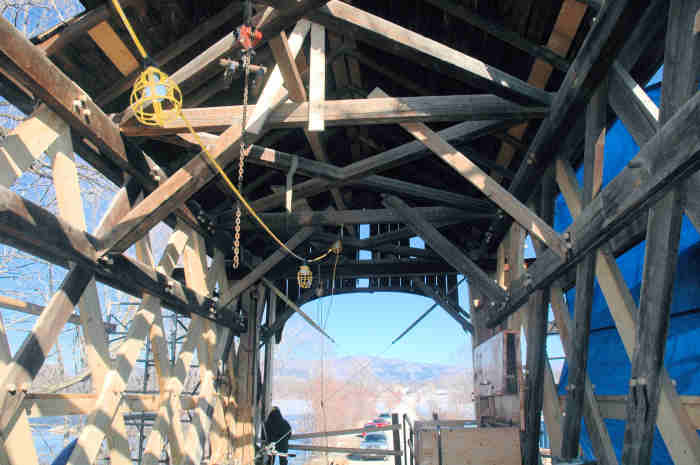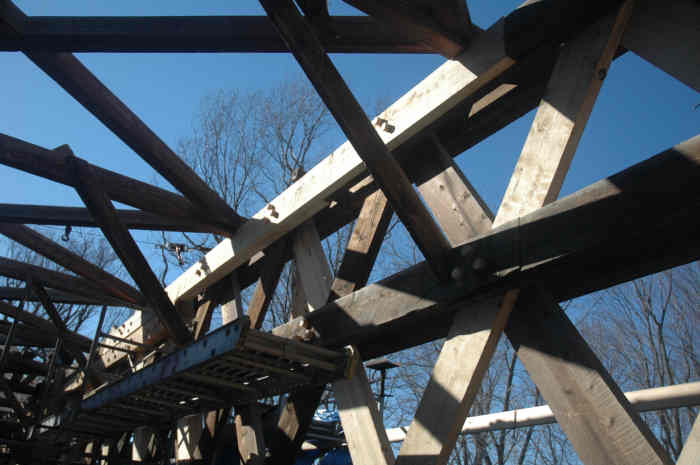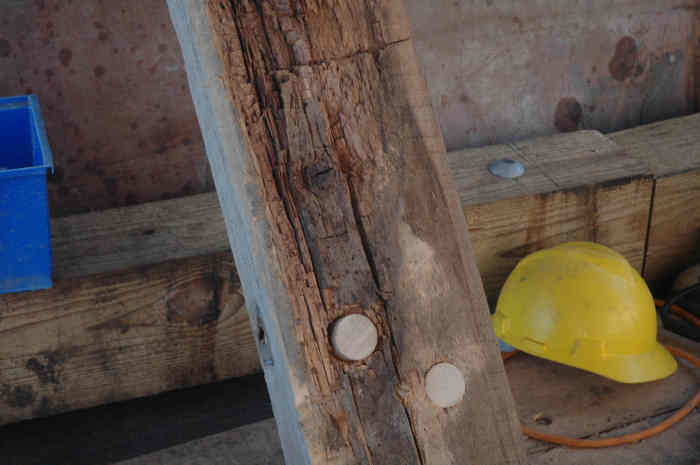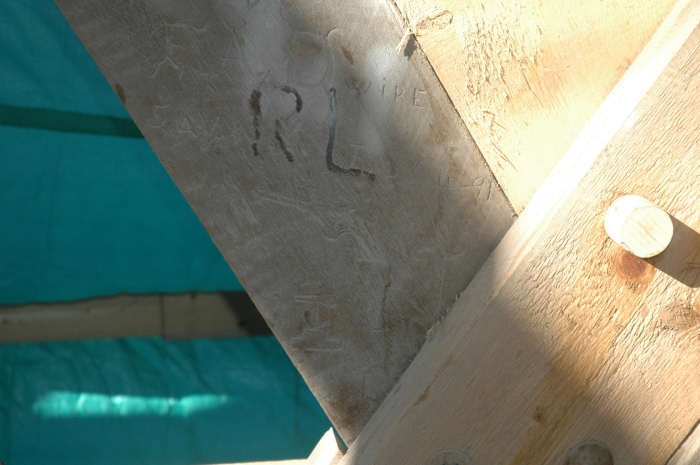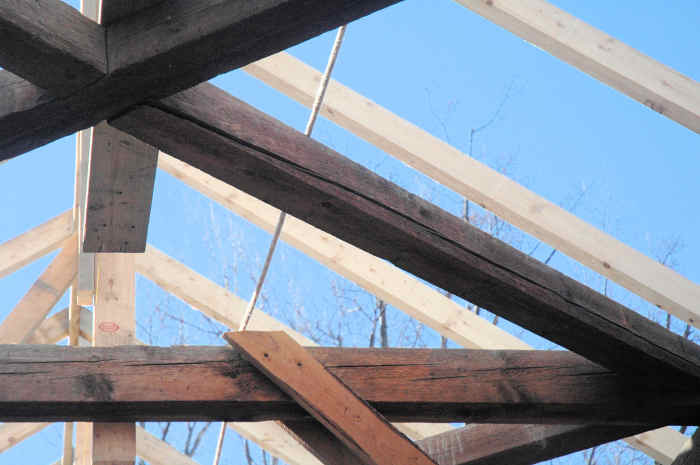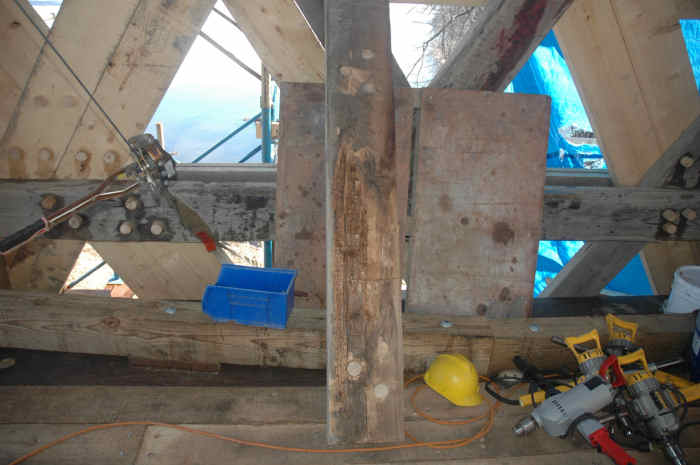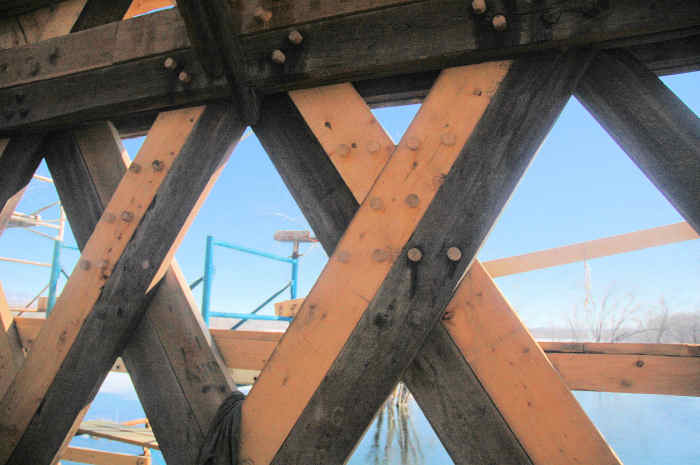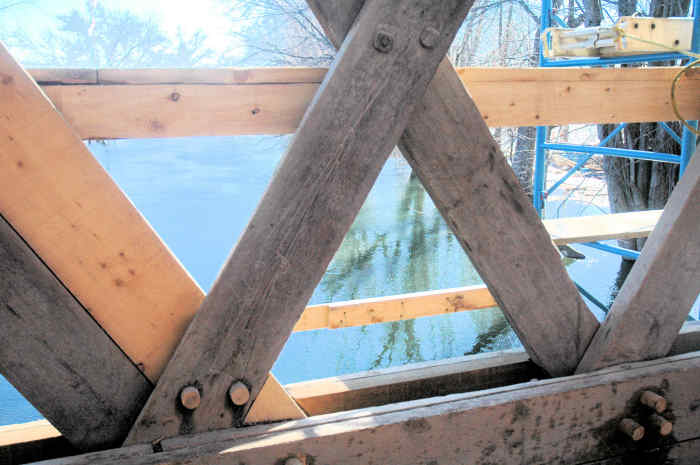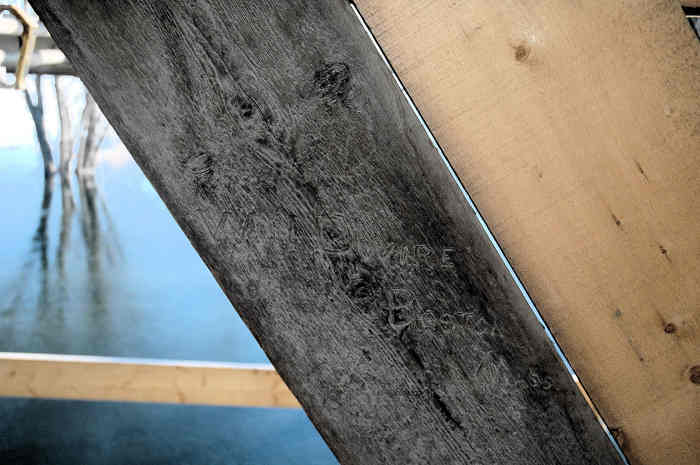
Cedar Swamp Bridge Renovation [WGN VT-01-01]
A Pictorial
Photos by Joe Nelson
March 17, 2008

The renovation of the Swamp Road Bridge (Salisbury Station Bridge) is proceeding as usual. With the primary requirement of Vtrans in mind—highway safety, and the primary requirement for preservation by the National Register of Historic Sites, the engineers on the job are challenged daily to fulfill both. Eric Foster, of Vtrans, and Jim Ligon, of Alpine Construction, Stillwater, N.Y. are up to the task.
It is expected that 100-plus yearold wooden bridges hold secrets that even the most thorough pre-construction engineering inspection can't uncover. The "Swamp" bridge hasn't dissapointed. While dissassembling the structure to replace known rot damaged truss members, members thought to be sound were found to be rotted also. At least one-third more than the thirty-odd lattice members specified in the contract were found to need replacement. Surprizes were also found in both upper and lower chords.
To make the situation even more entertaining for the crew, Mother Nature took a hand. March weather with snow, rain and snow melt, Otter creek covered Cornwall's part of Swamp Road while hurling ice chunks, trees and other flotsam at the bridge under construction.
